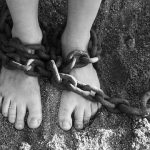When a loved one dies, it can be highly challenging for the family members to move on. However, getting things in order and carrying out the deceased’s wishes should take precedence after the initial grieving stage.
Once the burial process is over, the estate’s executor is left to manage the deceased person’s assets or properties. If you’re the estate administrator or executor, you must perform a few things to avoid issues down the line. Moving in the deceased person’s estate carries responsibilities, which would be discussed here in the article.
If you’re named the beneficiary of a parent or a loved one’s home, you can’t just move in without going through the following processes:
1. Have The Executor Conduct An Inventory To Check The Estate’s Worth
An individual or beneficiary can’t remove estate properties before they’re recorded and the property’s value is identified. Doing so may be considered a crime if other beneficiaries question the legally premature act. An exception to the rule is when the deceased explicitly states that all items will go to the beneficiary. Even so, you have to be careful as some assets inside the home may have been designated to other beneficiaries.
If you’re the executor, you have to be involved in the appraisal and inventory process. If you’re designated only as a beneficiary to the deceased’s home, ask the will administrator to do it before making any move.
2. Survey The Entire Property
Once authorized, you can start surveying the entire house and looking for important documents. Look for copies of asset ownership certificates, bank statements, life insurance, stocks, and investment papers. Keep them in a safe area.
Visit every section of the entire home and take photos. Take note of the things you can keep and those you can get rid of. This can be a tough process for you, but it’s necessary to get through with the grieving process. Don’t be in a rush and make sure your emotions are in check. If you feel overwhelmed, don’t hesitate to take a pause.
3. Perform An Estate Cleanout
Start decluttering. Keep valuable and sentimental items, including photos and other memorabilia. But don’t fall into the trap of keeping everything so you can hold on to the deceased’s memories. Like moving out, you need to separate things that you need to keep, something that you can sell, and items that you can throw away. If you need professional help disposing of some items, pick a cleaning company that does estate cleanups near you.
Unless the will names you as the sole beneficiary, wait until the asset evaluation and division are settled before moving in. Depending on the size of assets, the settlement process can take several months.
4. Change Locks And Perform Minor Repairs
Regarding potential accidents, check whether the plumbing system and other parts of the deceased’s property need to be fixed. Focus on keeping the home secure by repairing faulty doors and windows. If you’re not going to transfer in the next few weeks, ensure that the essential utilities are turned off to prevent potential accidents. Don’t forget to change locks, too, and keep the keys with you.
5. Record The Asset Division Process
After decluttering and organizing the home, let other beneficiaries collect small items as stated in the will and record the processes. Apart from listing down the names of beneficiaries and the items taken, it’s also helpful to take photos of the valuables and ask the beneficiary to sign a document as proof of claim.
6. Sell Valuable Items
If you don’t have enough cash to pay for the departed one’s debts and other financial obligations, consider hiring appraisers to evaluate any remaining assets such as antiques and jewelry, as long as it doesn’t go against the person’s wishes.
Conduct an estate sale if you’re dealing with a handful of items. If there are only a few things to offer, consider listing the small asset on online selling platforms—but not without having the item appraised first.
7. Consider Donating Things You Can’t Sell Or Throw Away
Some family members named in the will may not be keen on getting the item for various reasons. Check with the lawyer to donate the item to a non-profit or charity organization. Organizations are always willing to receive any of this stuff from generous donors, from books to clothes and cars.
Final Thoughts
Getting rid of a deceased loved one’s property is highly emotional. Despite the urge to keep everything that reminds you of the family member who just died, it’s essential to know which items to keep and which ones to get rid of. This can be a challenging exercise but crucial in the grieving process. Going through this checklist can help you move on and make the process less excruciating.




